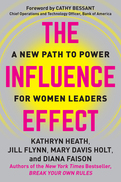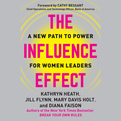BK Blog Post
Five Books that Influence Our Thinking Today (and Not for the Better)
 Posted by
Jeevan Sivasubramaniam,
Managing Director, Editorial,
Berrett-Koehler Publishers Inc.
Posted by
Jeevan Sivasubramaniam,
Managing Director, Editorial,
Berrett-Koehler Publishers Inc.
There are many books that have positively shaped the way we think and act in the world, but no one talks about the ones that did more damage than good.
There are many books that have positively shaped the way we think and act in the world, but no one talks about the ones that did more damage than good. Many books have, in the guise of furthering knowledge, often set our thinking back several decades, if not centuries.
Here are five books that did some serious damage -- and many continue to do so:
1. The Hoax of the Twentieth Century: The Case Against the Presumed Extermination of European Jewry by Arthur R. Butz (1975)
This is the book that kick-started the holocaust denial movement by claiming to present evidence that the Nazis did not try to exterminate Jews during WWII and that the entire thing was a fabrication by the US government to control post-war strategic interests. The work is still widely read today and used as evidence by several fringe groups as proof of a "Jewish conspiracy." Most shocking is the fact that the author is still a professor and teaches (albeit electrical engineering) at Northwestern.
2. The Bell Curve: Intelligence and Class Structure in American Life by Richard J. Herrnstein and Charles Murray (revised in 1995)
Most people would agree that intelligence could potentially be a decent predictor of income, job performance, and socioeconomic background, but most people would also have a problem with the authors' assertion that intelligence varies based on racial background. The authors also advocate the government ending all welfare assistance to poor unwed mothers because they believe it "encourages" women with low IQs to have children. The research presented in the book is still used in various forms today to argue against welfare programs and aid for the poor.
3. The Malleus Maleficarum by Heinrich Kramer and Jacob Sprenger (1486)
This work (meaning "The Hammer of Witchcraft") was a manual for witch hunters to catch and destroy supposed witches. Between 1487 and 1520, there were no less than twenty editions of the book published, with another sixteen editions published between 15784 and 1669. This work was most responsible for launching centuries of witch hunts in which countless innocent people (mostly women) were put to death.
4. Mein Kampf by Adolf Hitler (1925)
An obvious inclusion on this list, this is the book that served as the calling card to one of the most destructive and tragic genocides ever. At the time of publication, the book was largely ignored (if you've ever tried reading it, you know why), but this all changed after the author's ascent to power. In 1945, there were over 10 million copies of the book in circulation. Drawing on the ridiculously false "facts" contained in Protocols of the Elders of Zion, the book warned of the "Jewish Peril," or a global conspiracy by Jews to dominate the world. Everyone knows the horror that followed. To this day, the book is still widely read -- in most cases as a historical document, but in some circles, unfortunately, as a testament to truth.
5. Baby and Childcare by Benjamin Spock (1946)
Dr. Spock had some good suggestions and ideas about child-rearing in this bestselling work, but it's difficult to deny that more than fifty thousand infants died because parents took certain other advice in this bestselling book. In the original edition (the content has been removed in revised editions), Spock advocated putting babies to sleep on their stomachs as he felt that was safer than having them sleep on their backs. Unfortunately, this advice led to a significant number of deaths through suffocation -- especially since healthcare practitioners started advising new mothers to follow this instruction.
Here are five books that did some serious damage -- and many continue to do so:
1. The Hoax of the Twentieth Century: The Case Against the Presumed Extermination of European Jewry by Arthur R. Butz (1975)
This is the book that kick-started the holocaust denial movement by claiming to present evidence that the Nazis did not try to exterminate Jews during WWII and that the entire thing was a fabrication by the US government to control post-war strategic interests. The work is still widely read today and used as evidence by several fringe groups as proof of a "Jewish conspiracy." Most shocking is the fact that the author is still a professor and teaches (albeit electrical engineering) at Northwestern.
2. The Bell Curve: Intelligence and Class Structure in American Life by Richard J. Herrnstein and Charles Murray (revised in 1995)
Most people would agree that intelligence could potentially be a decent predictor of income, job performance, and socioeconomic background, but most people would also have a problem with the authors' assertion that intelligence varies based on racial background. The authors also advocate the government ending all welfare assistance to poor unwed mothers because they believe it "encourages" women with low IQs to have children. The research presented in the book is still used in various forms today to argue against welfare programs and aid for the poor.
3. The Malleus Maleficarum by Heinrich Kramer and Jacob Sprenger (1486)
This work (meaning "The Hammer of Witchcraft") was a manual for witch hunters to catch and destroy supposed witches. Between 1487 and 1520, there were no less than twenty editions of the book published, with another sixteen editions published between 15784 and 1669. This work was most responsible for launching centuries of witch hunts in which countless innocent people (mostly women) were put to death.
4. Mein Kampf by Adolf Hitler (1925)
An obvious inclusion on this list, this is the book that served as the calling card to one of the most destructive and tragic genocides ever. At the time of publication, the book was largely ignored (if you've ever tried reading it, you know why), but this all changed after the author's ascent to power. In 1945, there were over 10 million copies of the book in circulation. Drawing on the ridiculously false "facts" contained in Protocols of the Elders of Zion, the book warned of the "Jewish Peril," or a global conspiracy by Jews to dominate the world. Everyone knows the horror that followed. To this day, the book is still widely read -- in most cases as a historical document, but in some circles, unfortunately, as a testament to truth.
5. Baby and Childcare by Benjamin Spock (1946)
Dr. Spock had some good suggestions and ideas about child-rearing in this bestselling work, but it's difficult to deny that more than fifty thousand infants died because parents took certain other advice in this bestselling book. In the original edition (the content has been removed in revised editions), Spock advocated putting babies to sleep on their stomachs as he felt that was safer than having them sleep on their backs. Unfortunately, this advice led to a significant number of deaths through suffocation -- especially since healthcare practitioners started advising new mothers to follow this instruction.






